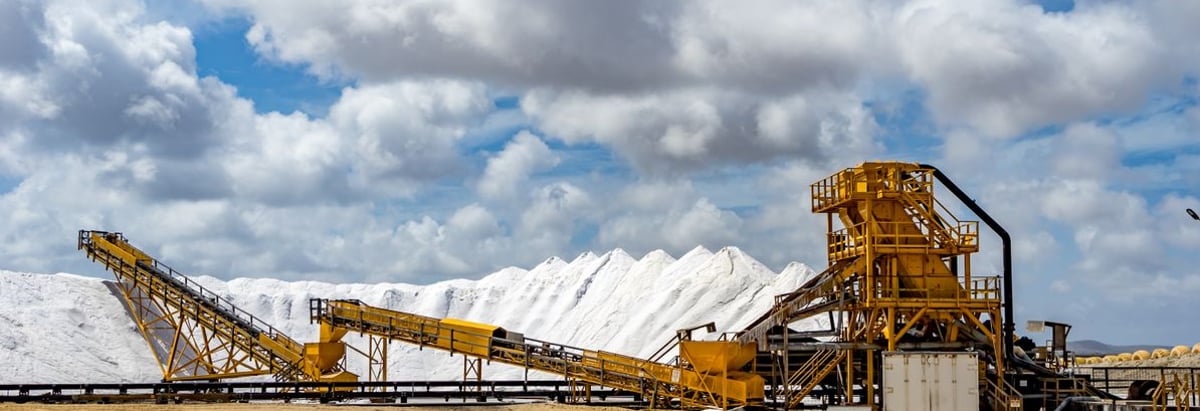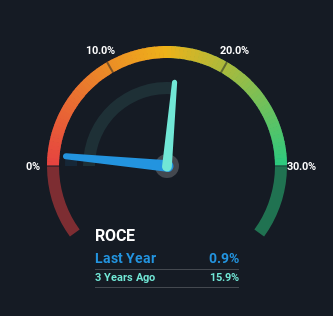- Australia
- /
- Metals and Mining
- /
- ASX:WSI
Be Wary Of WestStar Industrial (ASX:WSI) And Its Returns On Capital

If we want to find a stock that could multiply over the long term, what are the underlying trends we should look for? Firstly, we'd want to identify a growing return on capital employed (ROCE) and then alongside that, an ever-increasing base of capital employed. Ultimately, this demonstrates that it's a business that is reinvesting profits at increasing rates of return. Although, when we looked at WestStar Industrial (ASX:WSI), it didn't seem to tick all of these boxes.
Understanding Return On Capital Employed (ROCE)
For those that aren't sure what ROCE is, it measures the amount of pre-tax profits a company can generate from the capital employed in its business. Analysts use this formula to calculate it for WestStar Industrial:
Return on Capital Employed = Earnings Before Interest and Tax (EBIT) ÷ (Total Assets - Current Liabilities)
0.0092 = AU$290k ÷ (AU$70m - AU$38m) (Based on the trailing twelve months to December 2023).
So, WestStar Industrial has an ROCE of 0.9%. Ultimately, that's a low return and it under-performs the Metals and Mining industry average of 11%.
See our latest analysis for WestStar Industrial

While the past is not representative of the future, it can be helpful to know how a company has performed historically, which is why we have this chart above. If you want to delve into the historical earnings , check out these free graphs detailing revenue and cash flow performance of WestStar Industrial.
What Can We Tell From WestStar Industrial's ROCE Trend?
In terms of WestStar Industrial's historical ROCE movements, the trend isn't fantastic. Around four years ago the returns on capital were 48%, but since then they've fallen to 0.9%. On the other hand, the company has been employing more capital without a corresponding improvement in sales in the last year, which could suggest these investments are longer term plays. It's worth keeping an eye on the company's earnings from here on to see if these investments do end up contributing to the bottom line.
On a side note, WestStar Industrial has done well to pay down its current liabilities to 55% of total assets. That could partly explain why the ROCE has dropped. What's more, this can reduce some aspects of risk to the business because now the company's suppliers or short-term creditors are funding less of its operations. Some would claim this reduces the business' efficiency at generating ROCE since it is now funding more of the operations with its own money. Keep in mind 55% is still pretty high, so those risks are still somewhat prevalent.
The Bottom Line
In summary, WestStar Industrial is reinvesting funds back into the business for growth but unfortunately it looks like sales haven't increased much just yet. And in the last five years, the stock has given away 36% so the market doesn't look too hopeful on these trends strengthening any time soon. In any case, the stock doesn't have these traits of a multi-bagger discussed above, so if that's what you're looking for, we think you'd have more luck elsewhere.
One more thing: We've identified 3 warning signs with WestStar Industrial (at least 1 which is significant) , and understanding them would certainly be useful.
For those who like to invest in solid companies, check out this free list of companies with solid balance sheets and high returns on equity.
Valuation is complex, but we're here to simplify it.
Discover if WestStar Industrial might be undervalued or overvalued with our detailed analysis, featuring fair value estimates, potential risks, dividends, insider trades, and its financial condition.
Access Free AnalysisHave feedback on this article? Concerned about the content? Get in touch with us directly. Alternatively, email editorial-team (at) simplywallst.com.
This article by Simply Wall St is general in nature. We provide commentary based on historical data and analyst forecasts only using an unbiased methodology and our articles are not intended to be financial advice. It does not constitute a recommendation to buy or sell any stock, and does not take account of your objectives, or your financial situation. We aim to bring you long-term focused analysis driven by fundamental data. Note that our analysis may not factor in the latest price-sensitive company announcements or qualitative material. Simply Wall St has no position in any stocks mentioned.
About ASX:WSI
WestStar Industrial
An industrial services company, provides engineering, fabrication, construction, and maintenance services to resources, energy, oil and gas, petrochemical, water, defence, and infrastructure sectors in Australia.
Adequate balance sheet low.
Market Insights
Community Narratives



